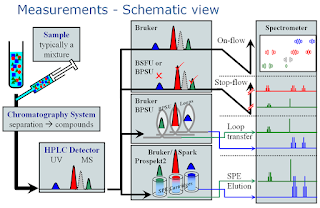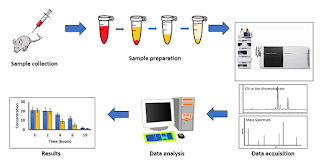10th International Conference on Mass Spectrometry and Chromatography
Liquid chromatography–mass spectrometry Liquid chromatography: Liquid chromatography -hyphenated technique combined with HPLC with the detection power of mass spectrometry in which the components are distributed between two phases. Liquid chromatography can be divided into five categories Adsorption chromatography : Adsorption chromatography enables the use of liquid chromatography to separate a racemic mixture into its enantiomeric parts. Partition chromatography : The stationary phase and the mobile phase in partition chromatography are liquid. The stationary phase liquid would be a homogeneous mixture liquid with the mobile phase. Ion-exchange chromatography : ion exchange chromatography is applied to separate and determine ions on columns that have a low ion exchange capacity and it is based on the equilibrium of ion exchange Size-exclusion chromatography : Size exclusion chromatography separates molecules by their size. Th...



Comments
Post a Comment